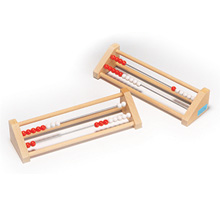Orleans Wood March 17 Agenda --- Grade 1 / 2 AM
1) 1 Review of Quantity and Relationships –Our goal
is to make sure that we are all at the same understanding regarding quantity
and relationships. à
20 to 30 minutes
Quantity
Review:
- Skim pages 32 to the top of 36 of A Guide
to Effective Instruction in Mathematics K – 3, Number Sense and Numeration. –
from your package from the Grade 2-3 workshop.
- Make quick jot notes regarding important
elements of Quantity
- Read the Characteristics of Learning and Instructional Strategies for your grade.
What do you find interesting? Do you disagree with anything? Does
anything resonate with you?
As a group of 2-3 make an anchor
chart of the important elements of Quantity
Relationships
Review:
- Skim pages 46 to the top of 50.
- Make quick jot notes regarding important
elements of Relationships
- Read the Characteristics of Learning and Instructional Strategies for your grade.
What do you find interesting? Do you disagree with anything? Does anything
resonate with you?
As a group of 2-3 make an anchor
chart of the important elements of Relationships
2) 2 Five
Frames & Ten Framesà 45 minutes
Why Ten Frames?
Activities and Practice
3) 3 Rekenreks
à30
to 45 minutes
Why Rekenreks?
Activities and Practice
4) 4 Open Number Lines
Why Open Number Lines?
5) 5 What can we implement into our classes?
How?
With a grade partner, take some time to plan how you could introduce one or
more of these strategies. Is there one strategy that could be introduced this
week or next to discuss at our next session?
6) Accountable Talk in Grade 1 and 2 (English
and French Immersion)
Orleans Wood March 17 Agenda --- Kindergarten PM
(Possible start at 12:45? I have an important doctor’s
appointment at Convent Glen at 12:15 that shouldn’t take too long)
1)
Quantity and Relationships – 20 to 30 minutes
Quantity:
- Read pages 32 to the top of 36 of A Guide to Effective Instruction in
Mathematics K – 3, Number Sense and Numeration. à will be provided for KG team
- Make quick jot notes regarding important
elements of Quantity
- Read the Characteristics of Learning and Instructional Strategies for your grade.
What do you find interesting? Do you disagree with anything? Does
anything resonate with you?
As a group of 2-3 make an anchor
chart of the important elements of Quantity
Relationships:
- Read pages 46 to the top of 50.
- Make quick jot notes regarding important
elements of Relationships
- Read the Characteristics of Learning and Instructional Strategies for your grade.
What do you find interesting? Do you disagree with anything? Does
anything resonate with you?
As a group of 2-3 make an anchor
chart of the important elements of Relationships
2)
Five
Frames & Ten Frames – 45 minutes
Why Ten Frames?
Kindergarten Activities and Practice - we
need to take the time to fully understand and embrace some of the activities so
that it is easier for us to implement them into our classes.
3)
Rekenreks
Why Rekenreks?
Kindergarten Activities and Practice - we
need to take the time to fully understand and embrace some of the activities so
that it is easier for us to implement them into our classes.
4) Open Number Lines
Why Open Number Lines?
5) What can we implement into our classes?
How?
With a grade partner, take some time to plan how you could introduce one or
more of these strategies. Is there one strategy that could be introduced this
week or next to discuss at our next session?




